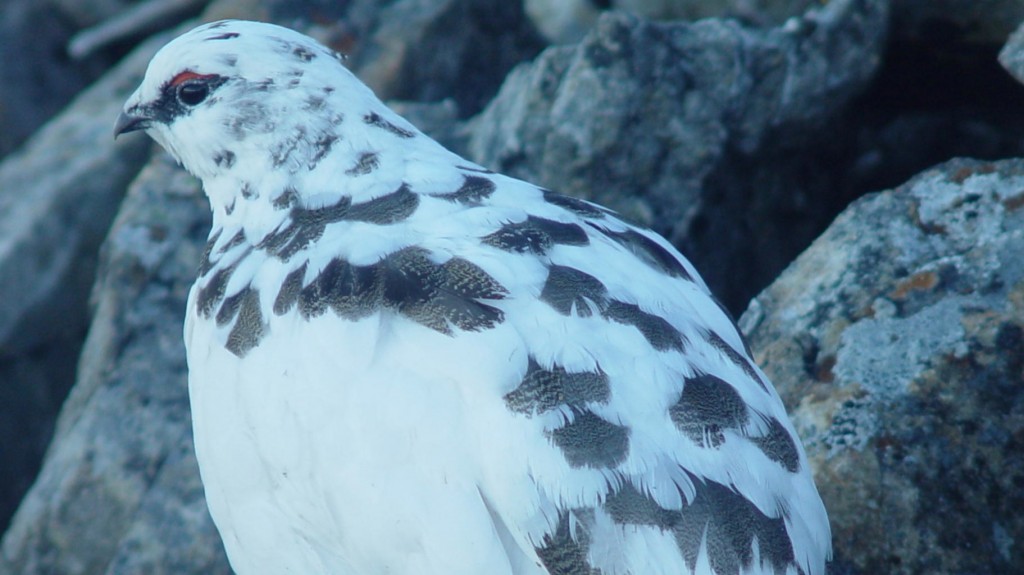Cold-climate creatures need to adapt as the temperatures drop if they want to survive the season. Frequently, the animals will add layers; an undercoat of fur can make all the difference in the biting cold. A few animals change color as well. Sometimes that’s to keep them warm. Other times, it’s to keep them hidden in the snow when predators are on the hunt. Check out the winter style of these seven animals.
1. White-Tailed Jackrabbit
![By Adam Lowe (Own work) [CC-BY-SA-3.0 (http://creativecommons.org/licenses/by-sa/3.0)], via Wikimedia Commons](http://blog.explore.org/wp-content/uploads/2014/12/WinterCoatJackrabbit-300x168.jpg)
By Adam Lowe (Own work) [CC-BY-SA-3.0 (http://creativecommons.org/licenses/by-sa/3.0)], via Wikimedia Commons
When temperatures drop and snow begins to fall, winter white is a must for this North American hare. White-tailed jackrabbits are prey for a number of animals, foxes and hawks amongst them. For the jackrabbits that live in places like Minnesota, where snow is common, these long-eared animals need to be able to blend into their surroundings. In the winter, a white winter coat will grow. Once the weather warms up again, the white-tailed jackrabbit will return to its thinner brown coat. (Sources: Minnesota Department of Natural Resources, ARKive)
2. Ptarmigan
The ptarmigan is a little bird found in the Arctic who relies on camouflage to get by in life. For this reason, it’s feathers change throughout the year. Although the ptarmigan is usually brown, by winter, it transforms into a snow white bird. This keeps the bird slightly safer when it walks through the snow and eats. (Source: Arctic Studies Center)
3. Stoat/Ermine
![By Mustela_erminea_winter.jpg: Steven Hint derivative work: Guerillero (Mustela_erminea_winter.jpg) [CC-BY-SA-3.0 (http://creativecommons.org/licenses/by-sa/3.0)], via Wikimedia Commons](http://blog.explore.org/wp-content/uploads/2014/12/WinterCoatErmine-300x168.jpg)
By Mustela_erminea_winter.jpg: Steven Hint derivative work: Guerillero (Mustela_erminea_winter.jpg) [CC-BY-SA-3.0 (http://creativecommons.org/licenses/by-sa/3.0)], via Wikimedia Commons
4. Dogs
![By Dirk Vorderstraße (Own work) [CC-BY-3.0 (http://creativecommons.org/licenses/by/3.0)], via Wikimedia Commons](http://blog.explore.org/wp-content/uploads/2014/12/WinterCoatGoldenRetriever-300x200.jpg)
By Dirk Vorderstraße (Own work) [CC-BY-3.0 (http://creativecommons.org/licenses/by/3.0)], via Wikimedia Commons
5. Cardinals
![By U.S. Fish and Wildlife Service Headquarters (cardinal in snow Uploaded by Dolovis) [CC-BY-2.0 (http://creativecommons.org/licenses/by/2.0)], via Wikimedia Commons](http://blog.explore.org/wp-content/uploads/2014/12/WinterCoatCardinal-300x168.jpg)
By U.S. Fish and Wildlife Service Headquarters (cardinal in snow Uploaded by Dolovis) [CC-BY-2.0 (http://creativecommons.org/licenses/by/2.0)], via Wikimedia Commons
6. White-Tailed Deer
![By Simon Davison (originally posted to Flickr as IMG_2224) [CC-BY-2.0 (http://creativecommons.org/licenses/by/2.0)], via Wikimedia Commons](http://blog.explore.org/wp-content/uploads/2014/12/WinterCoatDoe-300x168.jpg)
By Simon Davison (originally posted to Flickr as IMG_2224) [CC-BY-2.0 (http://creativecommons.org/licenses/by/2.0)], via Wikimedia Commons

![By Alpsdake (Own work) [Public domain], via Wikimedia Commons](http://blog.explore.org/wp-content/uploads/2014/12/WinterCoatPtarmigan-300x168.jpg)


